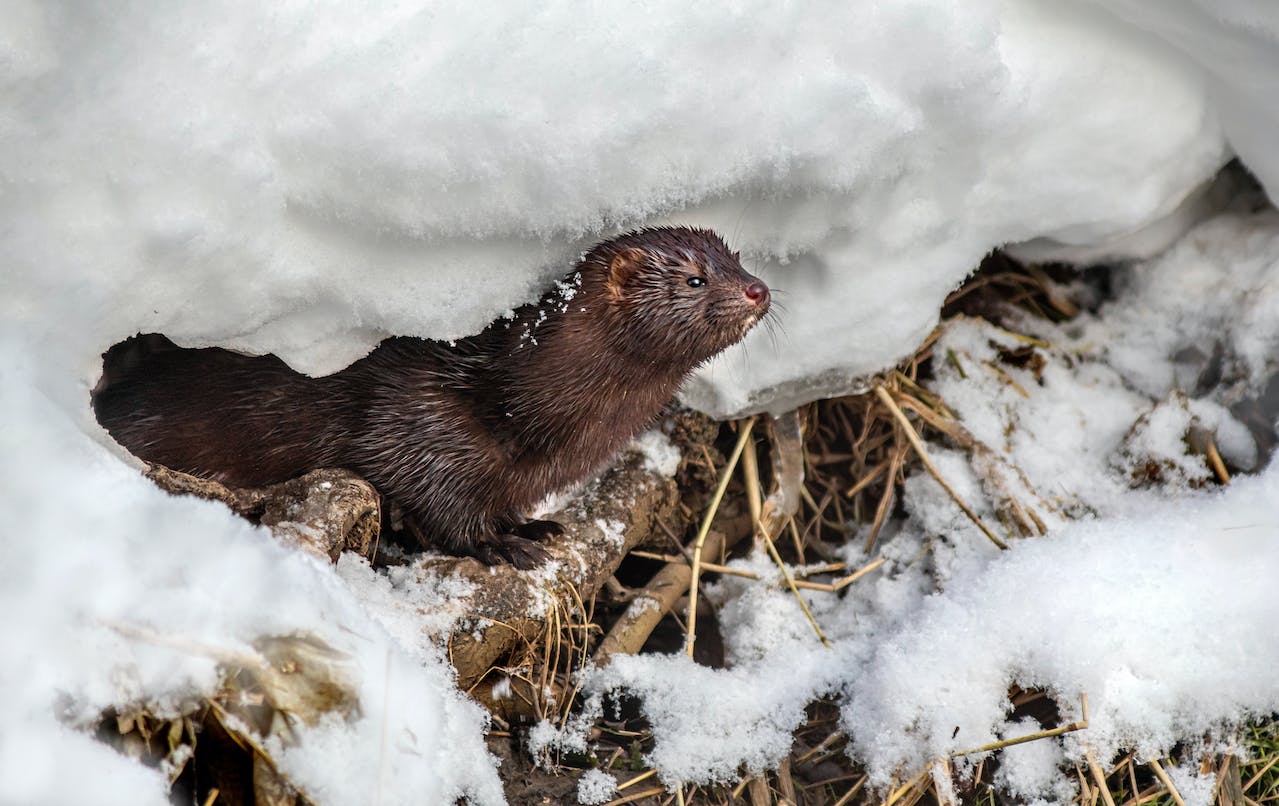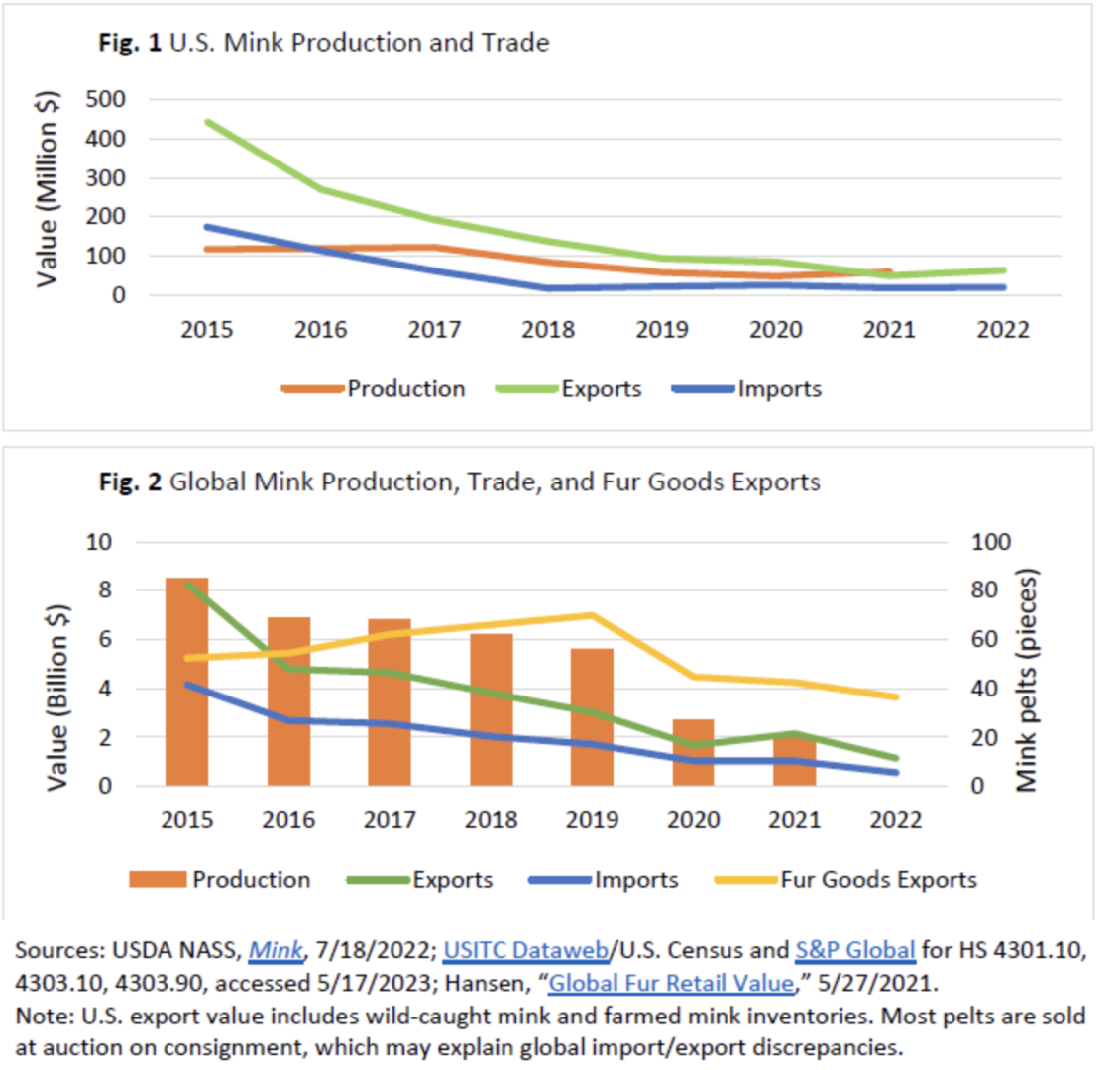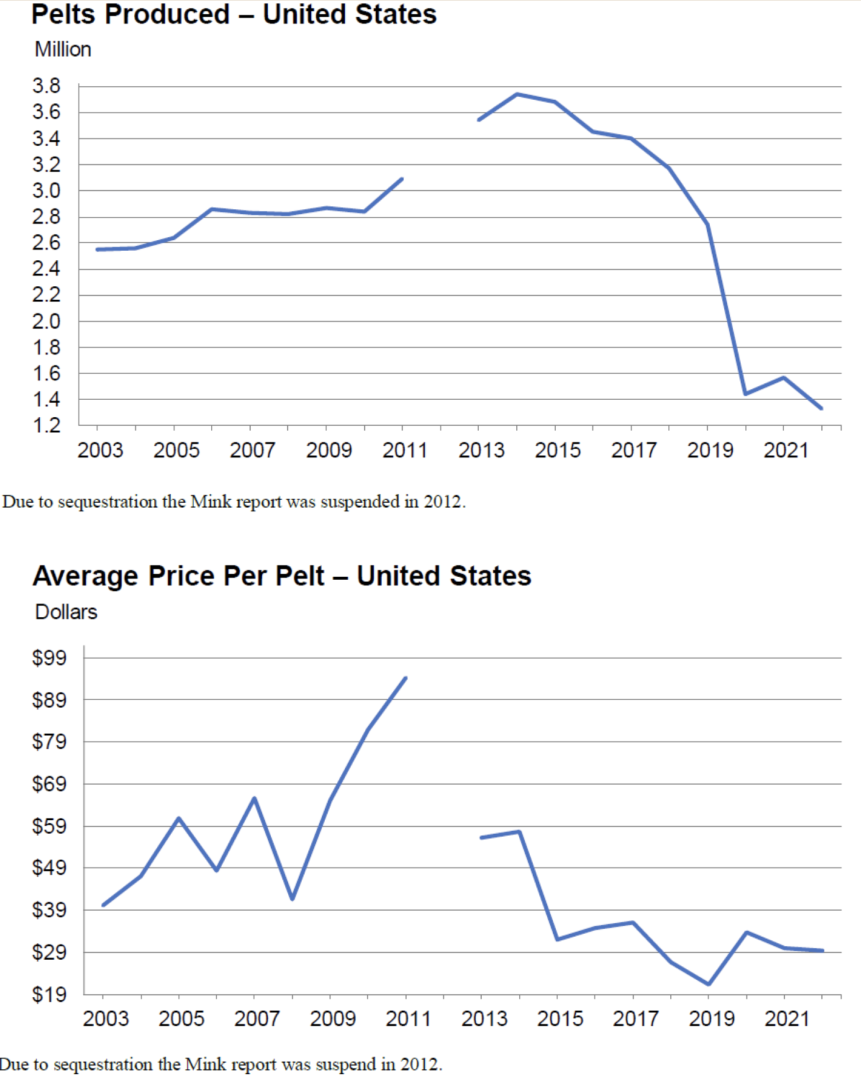Comments
- No comments found

Apparently minks are a possible vector for the spread of COVID-19.
Thomas Peacock and Wendy S. Barclay write about the issue in “Mink farming poses risks for future viral pandemics” (PNAS, July 19, 2023). They write (citations omitted):
Mink are highly susceptible to infection with several viruses that also infect humans. In late 2020, government agencies and academics in Europe and North America repeatedly documented that farmed mink had become infected with SARS-CoV-2, the causative agent of COVID-19. Evidence of mink-adapted viruses spilling back into local communities further demonstrated the poor biosecurity guidelines and practices in the industry. With this in mind, some countries—for example, the Netherlands—shut down mink production altogether. Fortunately, the mink-adapted variants of 2020 were not fitter than viruses circulating at the time in humans and, hence, did not spread widely. … The establishment of animal reservoirs for viruses that evolve on a separate trajectory from variants in humans sets a potential time bomb for re-emergence of the virus in humans—especially as immunity wanes in the older population and unexposed younger people make up a larger proportion of the population. This is the scenario that led to the emergence of pandemic H1N1 influenza virus from pigs in 2009. …
[W]e argue that mink, more so than any other farmed species, pose a risk for the emergence of future disease outbreaks and the evolution of future pandemics. … We strongly urge governments to also consider the mounting evidence suggesting that fur farming, particularly mink, be eliminated in the interest of pandemic preparedness.
The drop in the global mink trade is visible in US trade statistics. Anna Perry and Jessica Pugliese of the US International Trade Commission summarize the patterns in “Fur Real: Did the COVID-19 Pandemic Signal the End of the Mink Farm?” (USITC Executive Briefings on Trade, July 2023). They point out that the global decline in production and trade of mink fur started well before the pandemic.
The United States is the fifth largest producer of mink pelts in the world. From 2015–19, U.S. mink pelt exports, imports, and production declined, fig. 1. As of 2021, the United States had about 100 mink farms that produced nearly $60 million worth of pelts. In 2022, U.S. mink pelt exports were $64 million, down 33 percent from $94 million in 2019 but up slightly from $50 million in 2021.
Pre- and post-pandemic, the global export value of mink pelts was mostly in decline (except in 2021), fig. 2, largely responding to pelt prices. China is the world’s largest producer of mink pelts, followed by Denmark, Poland, and the Netherlands. The United States, South Korea, Hong Kong, China, and France are the largest downstream users, accounting for 55 percent of global imports of fur goods (including finished mink coats) in 2022. Pre-pandemic, the global export value of fur goods had climbed steadily, bolstered by Asian demand. However, from 2019 to 2022, the value of global fur goods exports declined 55 percent due to COVID-19 related retail closures, decreased demand, and price effects from reduced input prices.

The US Department of Agriculture, in its most recent annual mink report in July, shows a rise in mink prices back around 2010, along with a corresponding rise in US production of mink pelts. My own very casual reading of the trade press suggests that the higher prices and output were driven by higher demand from east Asia China and to some extent from Russia. But mink fur prices had dropped off by about 2013, and production truly plummeted in 2020.

I lay no claims to being a prognosticator of the mink fur markets. However, I will note that predictions of its demise have been ongoing for some time. Back on October 27, 1975, Michael L. Geczi wrote an article for the Wall Street Journal titled “Mink Farming is Growing More Scarce as Costs Rise and Fur Demand Declines.” Geczi noted that in the peak year of 1966, the US had produced 6.2 million mink pelts; however, the US Department of Agriculture mink report found that production had fallen by half to 3.1 million pelts in 1974. He pointed to a shift in beliefs about wearing mink as a high-prestige good, along with increased competition from lower-priced foreign mink production, as main causes.
In 1975, it seemed as if mink production might be on its way out. However, you’ll note from the USDA figure above that annual mink production from 2003-2019–just before the pandemic–was hovering around 3 million per year, which is about the same as in 1974. Of course, the US population and incomes have risen substantially since 1974, so in that sense mink has become relatively less important, but the absolute quantity produced remained similar–at least up to the pandemic.
However, the average US mink farm seems to have gotten considerably larger: it took about 1,100 mink farms to produce the 3 million pelts back in 1974, compared to only about 100 mink farms to produce that number today. In addition, according to the USDA, the US economy remains the largest market for mink of any country.
Timothy Taylor is an American economist. He is managing editor of the Journal of Economic Perspectives, a quarterly academic journal produced at Macalester College and published by the American Economic Association. Taylor received his Bachelor of Arts degree from Haverford College and a master's degree in economics from Stanford University. At Stanford, he was winner of the award for excellent teaching in a large class (more than 30 students) given by the Associated Students of Stanford University. At Minnesota, he was named a Distinguished Lecturer by the Department of Economics and voted Teacher of the Year by the master's degree students at the Hubert H. Humphrey Institute of Public Affairs. Taylor has been a guest speaker for groups of teachers of high school economics, visiting diplomats from eastern Europe, talk-radio shows, and community groups. From 1989 to 1997, Professor Taylor wrote an economics opinion column for the San Jose Mercury-News. He has published multiple lectures on economics through The Teaching Company. With Rudolph Penner and Isabel Sawhill, he is co-author of Updating America's Social Contract (2000), whose first chapter provided an early radical centrist perspective, "An Agenda for the Radical Middle". Taylor is also the author of The Instant Economist: Everything You Need to Know About How the Economy Works, published by the Penguin Group in 2012. The fourth edition of Taylor's Principles of Economics textbook was published by Textbook Media in 2017.
Leave your comments
Post comment as a guest